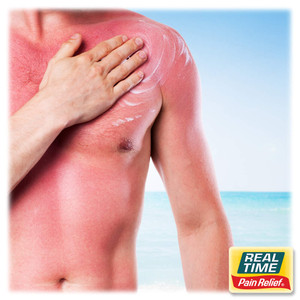Polymyositis: A Deep Dive into Inflammatory Muscle Disorders
Posted by Dennis R. Escalera on 2nd Jan 2025
Polymyositis is a chronic inflammatory condition characterized by muscle weakness and inflammation. It primarily affects the skeletal muscles, responsible for voluntary movement, and often manifests symmetrically, targeting muscles closest to the body's trunk. While rare, its impact on mobility and quality of life can be significant. This article explores the causes, symptoms, treatment options, and how topical solutions with nature's ingredients can aid in managing the discomfort associated with this condition.
Understanding Polymyositis
Polymyositis belongs to a group of diseases known as inflammatory myopathies. It is believed to be autoimmune in nature, where the body's immune system mistakenly attacks healthy muscle tissue. This leads to inflammation, muscle fiber damage, and, over time, muscle weakness.
Causes and Risk Factors
The exact cause of polymyositis is unknown, but several factors are thought to contribute:
- Genetics: A family history of autoimmune diseases may increase the risk.
- Infections: Certain viral infections, like those caused by HIV or influenza, can trigger the condition.
- Environmental Factors: Exposure to toxins or medications that affect the immune system might play a role.
Symptoms
Polymyositis symptoms often develop gradually, including:
- Progressive muscle weakness, particularly in the thighs, hips, shoulders, and neck.
- Difficulty performing daily tasks, such as climbing stairs or lifting objects.
- Fatigue and mild joint pain.
- Swallowing difficulties in advanced cases.
Diagnosis
Polymyositis is diagnosed through a combination of:
- Clinical Evaluation: Identifying muscle weakness patterns.
- Laboratory Tests: Elevated levels of muscle enzymes like creatine kinase (CK).
- Imaging and Biopsies: MRI scans and muscle biopsies confirm inflammation and damage.
Treatment Options
The primary goal of treatment is to reduce inflammation, manage symptoms, and improve muscle function.
- Medications: Corticosteroids, such as prednisone, are often prescribed to control inflammation. Immunosuppressive drugs, like methotrexate, may also be used.
- Physical Therapy: Strengthening and stretching exercises help improve mobility and reduce stiffness.
- Dietary Adjustments: Anti-inflammatory foods, such as omega-3 fatty acids, may complement medical treatments.
Topical Solutions for Symptom Management
In recent years, topical pain relief creams and lotions have gained popularity as adjuncts to traditional treatments. These products, made with nature's ingredients, offer localized relief from muscle pain and inflammation.
- Active Ingredients:
- Menthol: Provides a cooling sensation and may help to distract the brain from pain.
- Capsaicin: Derived from chili peppers, it may offer relief by desensitizing pain receptors in the skin.
- Arnica: Known for its anti-inflammatory and analgesic properties.
- Turmeric Extract: Contains curcumin, which has powerful anti-inflammatory effects.
Topical applications have several advantages:
- They provide relief directly to the affected area without systemic side effects.
- They are easy to use and can be reapplied throughout the day as needed.
- When combined with massage, they can improve blood circulation, promoting muscle recovery.
Living with Polymyositis
Managing polymyositis requires a comprehensive approach. Regular consultations with healthcare providers, adherence to prescribed therapies, and lifestyle modifications are essential. Incorporating a balanced diet, staying physically active within limits, and using topical products for localized relief can significantly improve quality of life.
References
- Mayo Clinic. Polymyositis. Available at:https://www.mayoclinic.org/diseases-conditions/polymyositis/symptoms-causes/syc-20353208
- National Institute of Neurological Disorders and Stroke. Inflammatory Myopathies. Available at: https://www.ninds.nih.gov/health-information/disorders/inflammatory-myopathies





